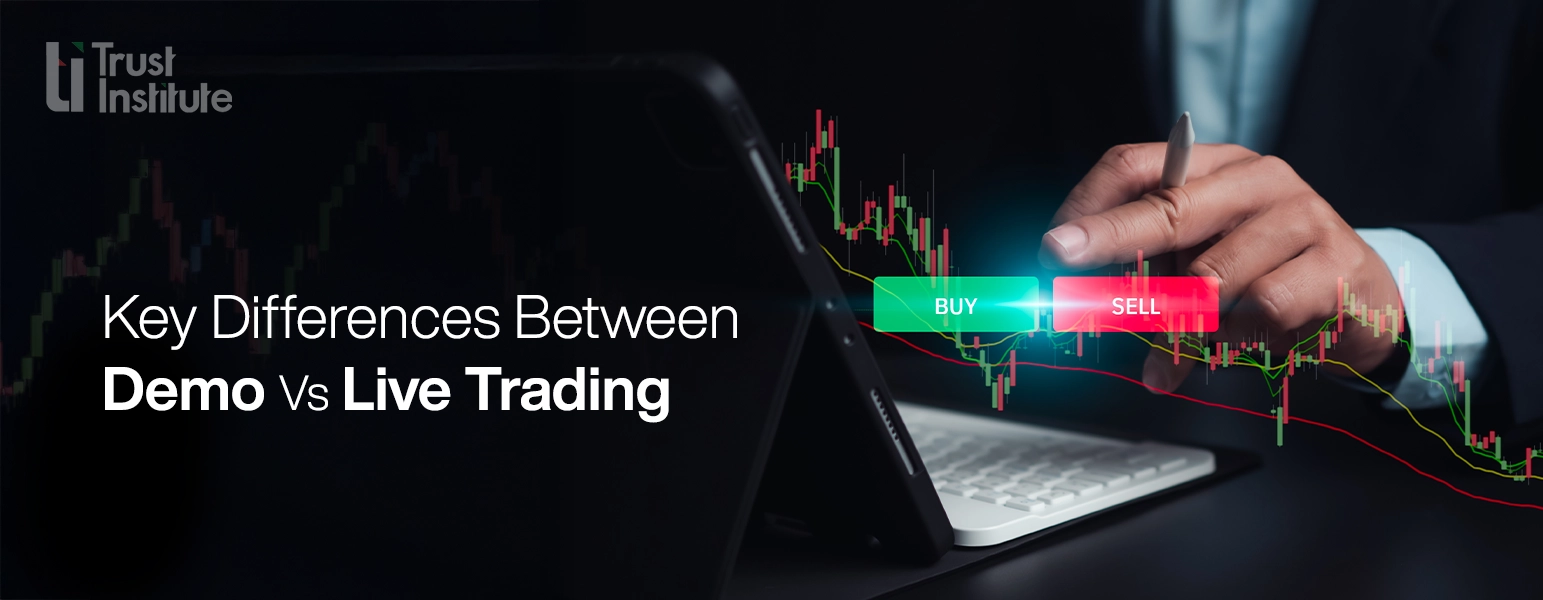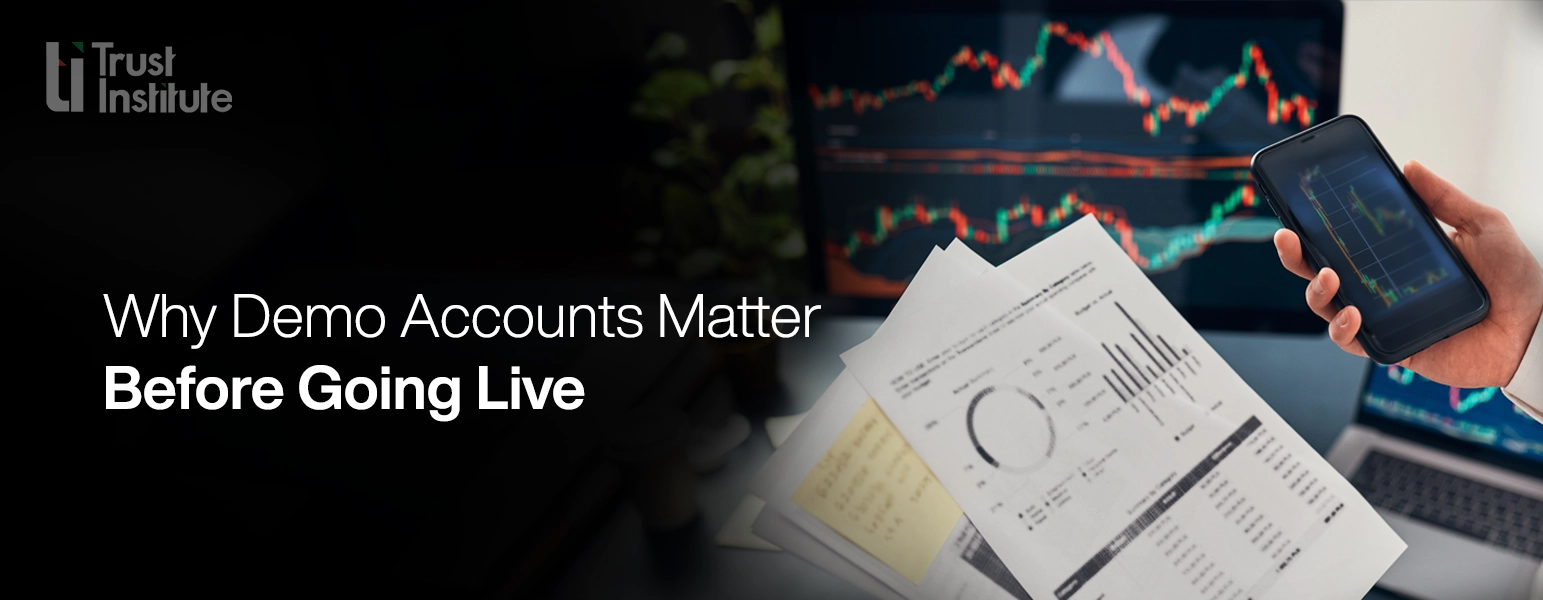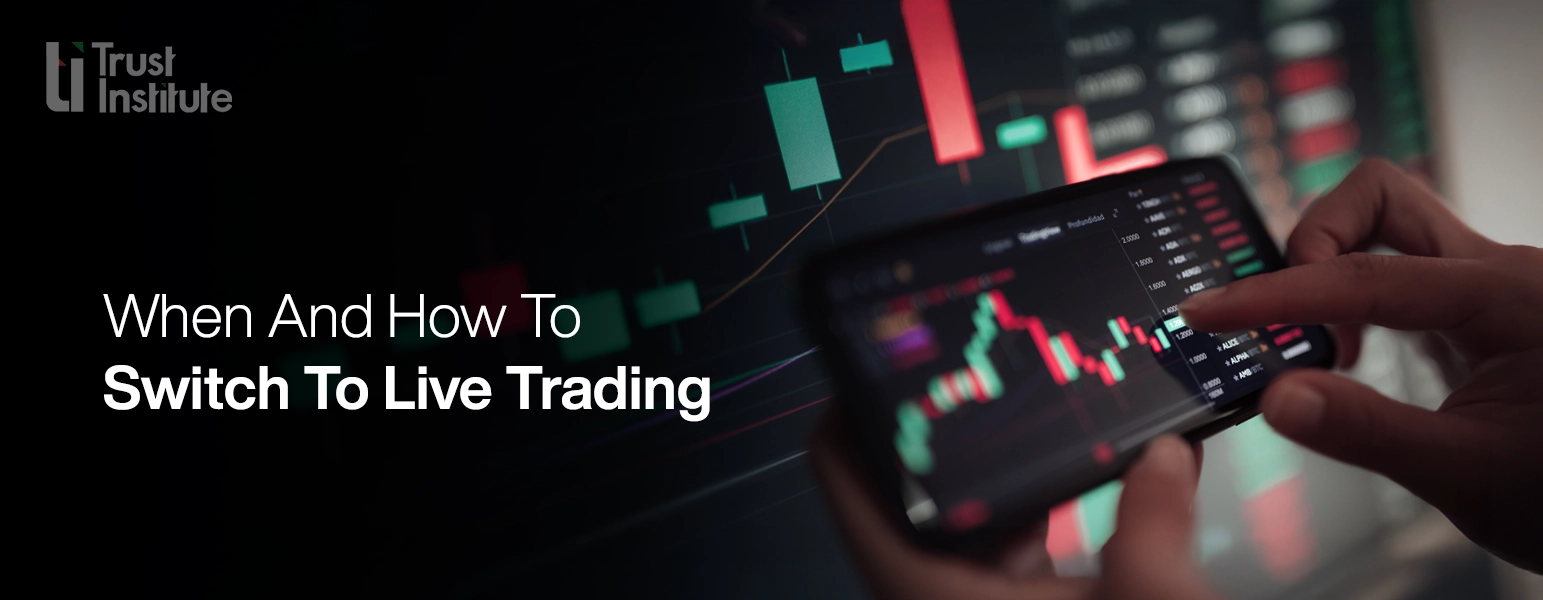Explore the world of financial trading and
gain the knowledge and tools for success with our expertly
written articles and blogs.

Demo Accounts vs. Live Trading: When to Make the Switch

For every aspiring trader, starting with a demo account feels like the safest way to learn. A demo account provides a risk-free environment to understand the trading platform, test strategies, and get familiar with market dynamics. But at some point, every trader faces the big question: demo trading vs live trading, when is the right time to make the switch?
The Difference Between Demo and Live Trading
At first glance, a demo account and a live account may look almost identical. Both give you access to price charts, trading tools, and market movements. But the difference between demo and live trading goes beyond just numbers on a screen.
- Capital at Risk: In a demo account, you trade with virtual funds. In a live account, your real money is on the line. This completely changes how you perceive wins and losses.
- Market Execution: Some brokers may offer slightly different execution speeds or spreads in live trading compared to demo accounts.
- Trading Psychology: Perhaps the biggest difference lies in how traders think and react. Trading psychology demo vs live is drastically different—what feels easy in a demo may trigger stress, fear, or overconfidence in live trading.
Why Demo Accounts Matter

Before switching, demo accounts provide crucial benefits:
- Learning the Platform: You can explore all features without the fear of making costly mistakes.
- Testing Strategies: Traders can back test and forward-test their methods in real-time conditions.
- Building Confidence: Demo accounts help new traders build familiarity with order execution, risk management, and chart analysis.
But staying in demo mode for too long has its drawbacks. You might develop habits that don’t translate well to real markets, such as taking oversized risks or ignoring emotional discipline
Forex Demo Account vs Live Account: Key Experiences
Many traders share that demo vs live forex trading experiences can feel worlds apart. In the demo, losses don’t hurt, and wins don’t excite much either. But in a live account, emotions magnify even small price movements. For instance:
- A small losing streak in live trading can shake confidence, even if the same happened in demo.
- The temptation to overtrade for quick profits becomes stronger with real money involved.
This is why experts recommend transitioning carefully and treating demo practice as preparation, not the end goal.
When to Switch from Demo to Live Trading
So, when to switch from demo to live trading? There is no universal answer, but here are some clear signs:
- Consistent Results: You are consistently profitable over weeks or months in your demo account.
- Risk Management Discipline: You can apply stop-losses, position sizing, and money management without hesitation.
- Strategy Confidence: You have tested your trading plan enough times to trust it under various market conditions.
- Emotional Readiness: You acknowledge the risks and are mentally prepared to face real gains and losses.
In short, the best time to move from demo to live trading is when you can combine knowledge, discipline, and emotional control.
Tips for Switching from Demo to Real Trading

Transitioning doesn’t have to be overwhelming. Here are a few tips for switching from demo to real trading successfully:
- Start Small: Begin with a small deposit so mistakes won’t cost much.
- Stick to the Same Strategy: Don’t suddenly change your approach once you go live.
- Manage Expectations: Focus on process, not profits. The goal is to stay consistent, not to “get rich quick.”
Track Emotions: Keep a journal of how you feel while trading live. This helps you identify emotional triggers and improve discipline.
Conclusion
Ultimately, demo accounts are a training ground, while live accounts are the real test. The transition from a forex demo account to a live account should be gradual, thoughtful, and based on readiness, not impatience.
Remember, every successful trader has gone through the same process—learning the ropes in demo and then facing the reality of live markets. By recognizing the difference between demo and live trading and carefully deciding when to switch from demo to live trading, you can make the move with confidence and build a sustainable trading journey.
All blogs
©TRUST TRAINING AND DEVELOPMENT INSTITUTE 2025
Disclaimer: Trust Institute is a KHDA-licensed educational institution based in Dubai, UAE. All training programs, materials, and content offered through our website and in-person sessions are provided strictly for educational purposes. We do not offer financial or investment advice, and we do not engage in or promote any trading activity.
Our courses are designed to increase knowledge and understanding of financial markets. Trust Institute is not a brokerage firm, does not manage client funds, and does not participate in any trading on behalf of its students.
Participation in financial markets, including Forex trading, involves significant risk and may not be suitable for everyone. Individuals are encouraged to conduct their own research and consult with licensed financial professionals before making any financial decisions.
By accessing our content or enrolling in our courses, you acknowledge and accept that Trust Institute is not liable for any financial outcomes resulting from the application of educational material shared. You agree that your use of this information is at your own discretion and responsibility.
Trust Institute is fully licensed and regulated by the Knowledge and Human Development Authority (KHDA) in Dubai, United Arab Emirates.






































